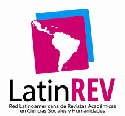Otherproof
DOI:
https://doi.org/10.26439/contratexto2016.n026.659Abstract
Delimiting a field of study and fixing a corpus of texts that will serve as the basis for the analysis are not the only tasks facing semiotics. There is another dimension, that of intersubjectivity, which raises interesting problems between the semiotic analyst and his sources of information. That otherness has an ethical framework, whose rigorous compliance depends on the study of a certain matter without falling into stereotypes or deformations. It is therefore a question of overcoming the univocal and exclusive view of the researcher, to give way to the voice of the other, to that symbolic space of dialogue and cultural exchange that enriches perspectives and establishes currents of empathy between the student and his object of study.
Downloads
Downloads
Published
Issue
Section
License
All of the works published are licensed under a CC BY 4.0 Creative Commons Attribution license. (updated on March 1st 2021)
The content of the journal may be shared in any material or format. The content may be adapted, contributed upon and transformed. Both possibilities are only permitted in so far as they complete the following conditions:
- Attribution: Credit must be given where it is due, a link to the license must be provided and changes, if made, must be indicated. This should be done in the manner deemed appropriate, without suggesting that the licensor promotes you or your use of the material.
Ownership rights
The patrimonial rights for Contratexto are published under a Creative Commons BY 4.0 license, allowing authors to keep the patrimonial rights to their work without restrictions.
If a work published in Contratexto were to be copied, distributed, spread, or any other activities contemplated in the aforementioned license, the author(s) and the journal must be mentioned visibly and expressly.
Self-archive
This journal allows and encourages authors to post items submitted to the journal on personal websites or institutional repositories both prior to and after publication, while providing bibliographic details that credit, if applicable, its publication in this journal.

















